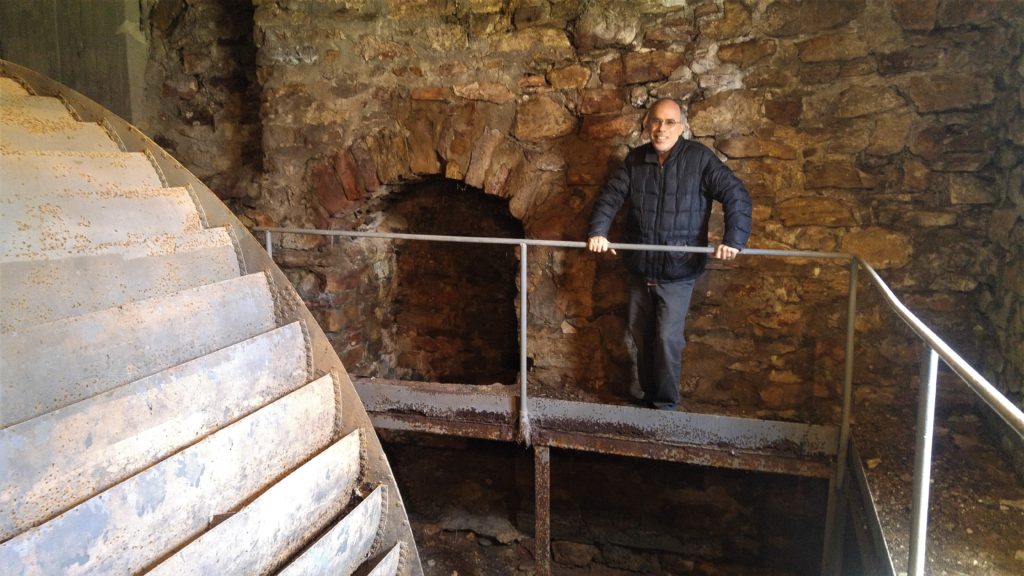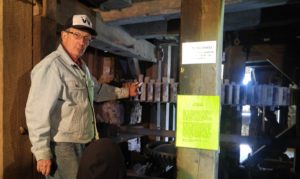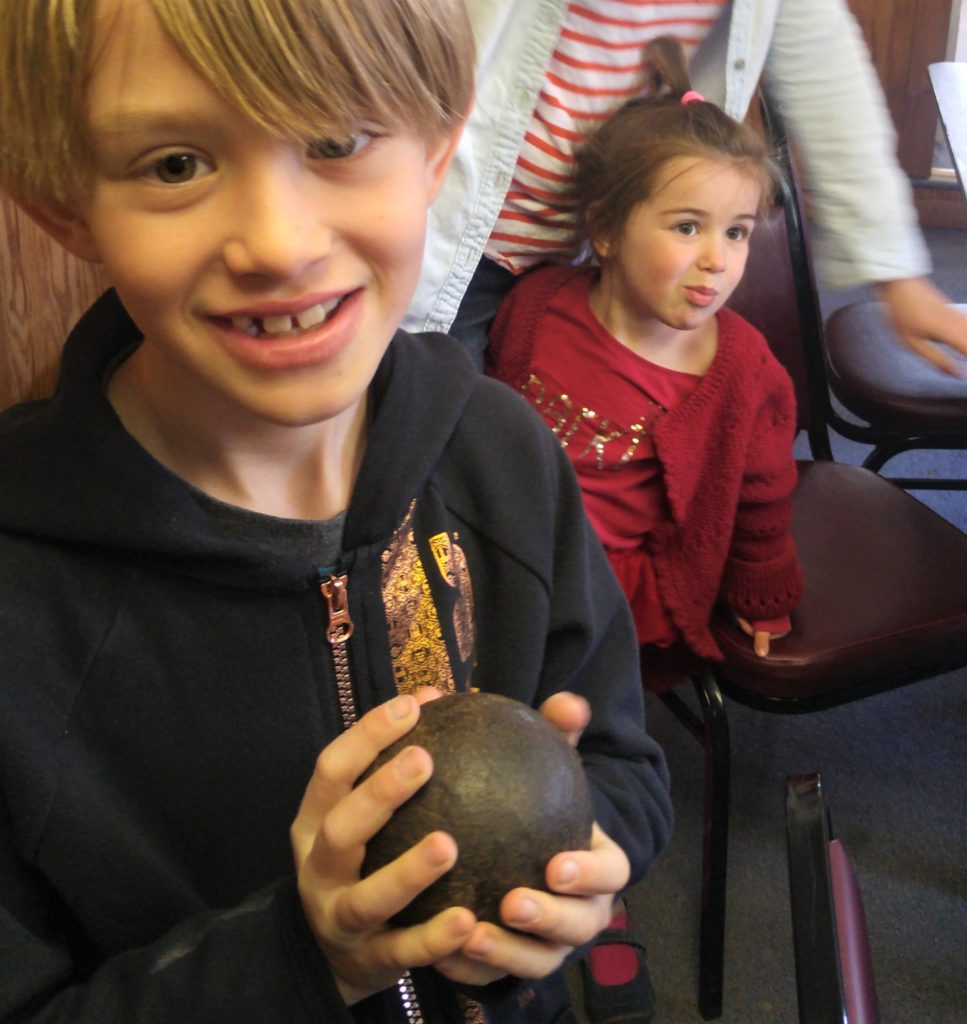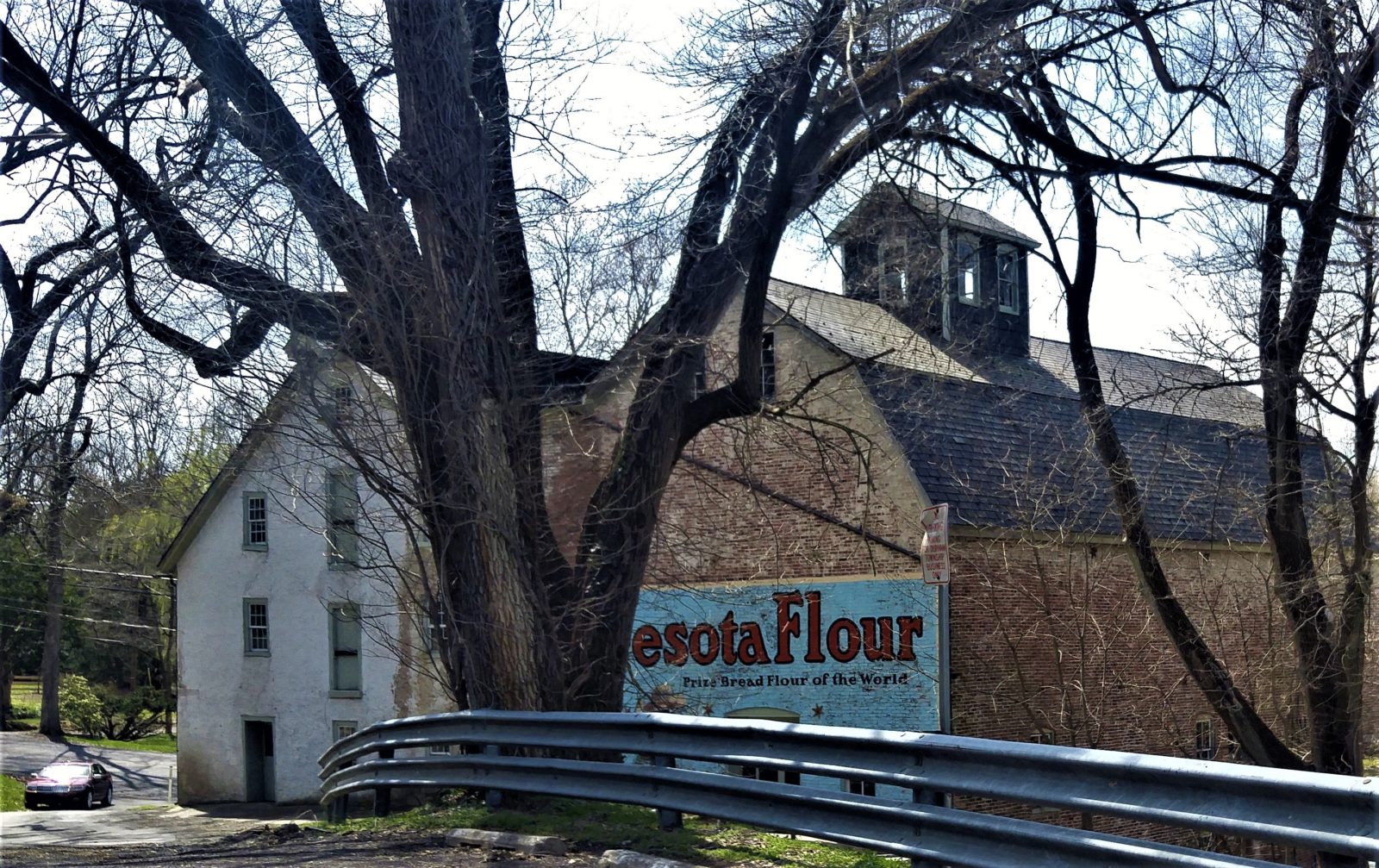Bucks County volunteers aim to restore one-of-a-kind grist mill to working condition.
I’ve been inside a number of former grist mills in Bucks County, some turned into homes, others preserved as dormant relics of our Colonial past. Examples that come to mind are in Milford, Ivyland, Hulmeville, Yardley and Washington Crossing Historic Park. My beloved Aunt Bennie in Oregon is jealous that I live in an area where such visits are possible. To enter a working mill would be over the moon for both of us.
The good news is efforts are underway by Durham Township and the Durham Township Historical Society to bring back to life one of the most unique grist mills in the nation. The Durham Mill and Furnace in Upper Bucks is one-of-a-kind. The mill’s grindstones operated for 147 consecutive years before munching to a halt in 1967. What makes the mill extra special is it was built on the foundation walls of one of America’s first blast furnaces built in 1727. The iron-smelting oven is still intact next to a basement waterwheel that powered the mill in Durham Village. The furnace produced iron bar and slab from ore mined in surrounding hills. The metal became pots, pans and stoves plus ammunition for George Washington’s army when the need arose in the American Revolution.

After 70 years the furnace closed. Twenty years later, the Durham Mill took shape over it. Floyd Riegel, Durham’s last miller, sold the building to county government. Bucks later transferred it to Durham Township. Last month, a $53,000 grant from the state arrived to repair to the mill’s 40 windows and make the three-story building accessible to disabled visitors.
Lorretta Dysher as a child recalled the wonder of being inside the mill in 1938 when her Grandpa Riegel owned it. “I could look through a screened window and watch the waterwheel as it went around and around on its endless journey. It made me spellbound to watch and listen. The water flowing over the wheel made an eerie sound as it fell back into the dark waterway below. The continual motion of the wheel kept a cool breeze coming from the window, with a dank, musty aura.
“Upstairs in the mill were the various-sized mill stones. These stones ground the flour and feed. Dad didn’t allow me in the mill very often. It was an extremely dangerous place for children to be. When I was permitted to enter the mill, I had to be very careful. Chutes crisscrossed throughout the mill. Some you could squeeze past, others were so low if you forgot to duck your head, a nasty goose egg would result. A massive system of belts and gears powered by the water wheel made the huge stones roll around and around. Underneath these huge heavy rolling stones, corn, millet, oats, rye, barley and grandfather’s Special Winter Wheat were ground. As varieties of grains were crushed, a delightful pleasant aroma shrouded the mill. Wet molasses was the best fragrance of all as it was added to the cow feed.”

The mill is a centerpiece of Durham, population 1,000. Volunteers in conjunction with township government have cleaned up the mill for tours and installed a new roof. In addition, they have removed 20 invasive Norway maple trees and 75 years worth of underbrush from the millrace that once channeled fast-flowing Cooks Creek under the mill to spin the waterwheel. The group recently planted 100 shrubs to stabilize the millrace banks, and has launched a national fund-raising campaign to get the mill up and running. An estimated $80,000 will make that possible.

A few years ago, my family toured the mill and were awe-struck. We closely examined the various grain chutes that Loretta described. Grandson Dashiell was surprised to find a wayward sparrow inside one of them. A mounted raven mascot on one wall drew granddaughter Margaux’s attention. We stood beside a giant grindstone as our guide explained how workers crushed seed to make flour. Above us were conveyor belts and gears that once drove the mill. To see all of this in motion would be something. Later we climbed to the top of grain storage bins and descended to the basement to see the ancient waterwheel and the 292-year-old blast furnace. In the mill office, we handled cannon balls manufactured for George Washington. Just outside, we climbed aboard a Durham boat, the type invented in the township to ship iron down the Delaware River to Colonial markets in Philadelphia and elsewhere. Gen. Washington eventually conscripted a fleet of 40 such boats to make possible his famed crossing of the Delaware.
With any luck, the mill will come to life in the not too distant future, making the Durham Mill and Furnace quite an attraction.
Sources include an official history of the mill on the web at https://durhamhistoricalsociety.org/durham-history/; and “By the Way: Saving an old mill, the 21st-century way” by Kathryn F. Clark published on Dec. 27, 2018 in the Bucks County Herald newspaper.

